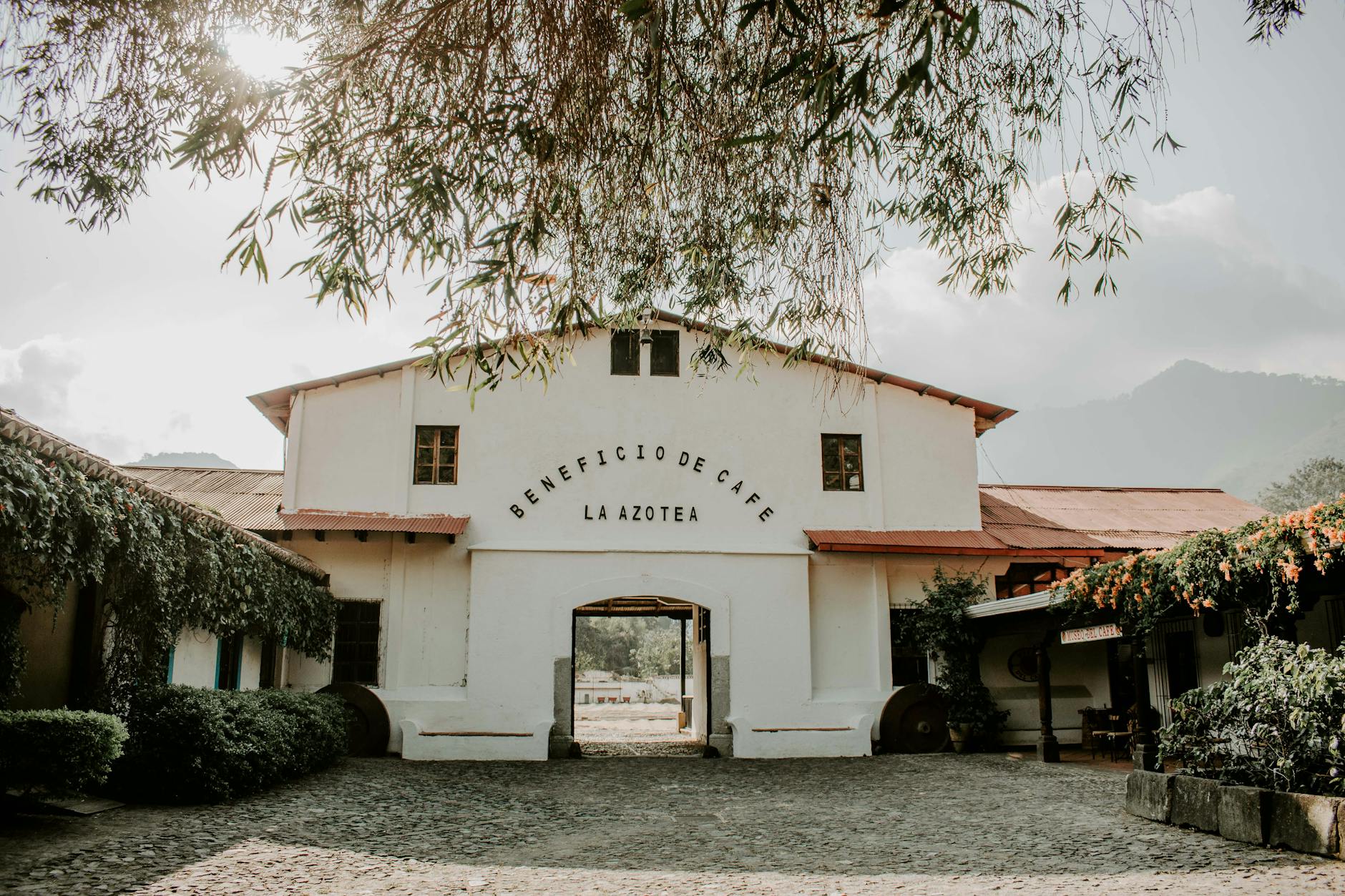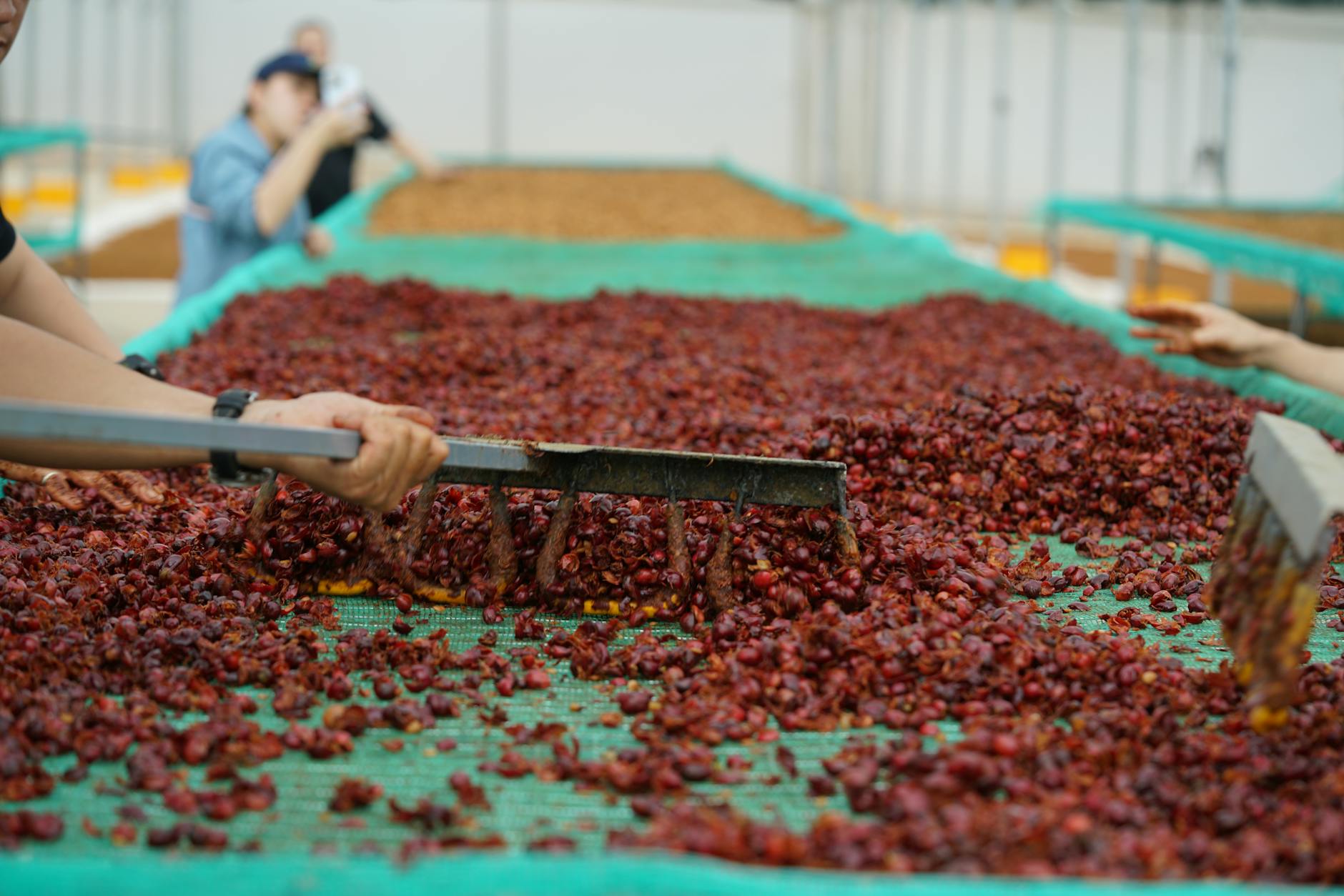
The Evolution of Coffee: How a Simple Bean Changed the World
Have you ever wondered how a small, unassuming bean became a global phenomenon? 🌍☕ The story of coffee is one of intrigue, adventure, and transformation. From its humble beginnings in the highlands of Ethiopia to its current status as a worldwide obsession, coffee has shaped cultures, economies, and daily rituals for millions.
But what's the real story behind your morning brew? How did coffee evolve from a local curiosity to a beverage that fuels the modern world? The journey of this remarkable bean is more fascinating than you might imagine, filled with tales of smuggling, scientific breakthroughs, and social revolutions.
In this exploration of coffee's evolution, we'll uncover the legends surrounding its discovery, trace its path across continents, and delve into the science that makes it so irresistible. We'll examine how coffee has influenced society, peek into the bustling modern industry, and consider its significant economic impact. So grab your favorite mug, and let's embark on a captivating journey through the rich and aromatic world of coffee! ☕🌱🌎
The Origins of Coffee: From Legend to Reality

A. Ethiopian folklore and the discovery of coffee
The story of coffee's discovery is steeped in Ethiopian legend, blending myth with history. According to folklore, a goat herder named Kaldi noticed his goats became unusually energetic after eating berries from a certain tree. Intrigued, Kaldi tried the berries himself and experienced a similar boost in energy. This discovery eventually led to the cultivation and consumption of coffee.
-
Key elements of the Ethiopian coffee legend:
-
Kaldi, the goat herder
-
Energetic goats
-
Red berries (coffee cherries)
-
Experimentation and discovery
-
B. Spread of coffee cultivation across Arabia and beyond
From its origins in Ethiopia, coffee cultivation spread to Yemen and other parts of Arabia. The Arabs were the first to cultivate coffee plants and develop methods for brewing the beverage. As trade routes expanded, so did the reach of coffee.
| Region | Contribution to Coffee's Spread |
|---|---|
| Ethiopia | Origin and initial discovery |
| Yemen | First large-scale cultivation |
| Egypt | Introduction to North Africa |
| Turkey | Gateway to Europe |
| India | Expansion to Asia |
C. Early coffee houses and their cultural impact
The rise of coffee houses in the Middle East and later in Europe marked a significant cultural shift. These establishments became centers for social interaction, intellectual discourse, and even political debate. Coffee houses played a crucial role in the spread of information and ideas during the Age of Enlightenment.
-
Functions of early coffee houses:
-
Social gathering spots
-
Centers for news and gossip
-
Venues for business meetings
-
Hubs for artistic and literary discussions
-
As coffee's popularity grew, it became more than just a beverage; it evolved into a cultural phenomenon that would shape societies around the world. This set the stage for coffee's global journey and its profound impact on various aspects of human civilization.
Coffee's Global Journey

A. Introduction to Europe and the Americas
Coffee's journey to Europe and the Americas marked a significant turning point in its global popularity. The aromatic beverage first reached Europe in the 17th century, quickly becoming a sensation in major cities like Venice, London, and Paris. Coffee houses emerged as hubs of intellectual discourse and social interaction, fostering the exchange of ideas and shaping cultural norms.
In the Americas, coffee arrived through various routes, with each region developing its unique coffee culture:
-
North America: Introduced by European settlers
-
Central America: Brought by Spanish colonizers
-
South America: Cultivated extensively in Brazil and Colombia
| Region | Introduction Period | Key Contributors |
|---|---|---|
| Europe | 17th century | Venetian merchants, Ottoman traders |
| North America | Late 17th century | European settlers, Dutch traders |
| Central America | 18th century | Spanish colonizers |
| South America | Early 18th century | Portuguese and Dutch settlers |
B. The rise of coffee plantations and trade routes
As coffee's popularity soared, plantations began to spring up across the globe. This expansion led to the establishment of intricate trade routes, connecting coffee-producing regions with eager consumers worldwide. The main coffee trade routes included:
-
The Silk Road: Connecting the Middle East to Europe
-
The Maritime Spice Route: Linking Asia to Europe via sea
-
The Atlantic Triangle Trade: Connecting Europe, Africa, and the Americas
These trade routes not only facilitated the movement of coffee but also played a crucial role in cultural exchange and economic growth.
C. Coffee's role in colonialism and economic development
Coffee's global journey was inextricably linked to colonialism and economic development. European powers established coffee plantations in their colonies, leading to:
-
Rapid economic growth in coffee-producing regions
-
Exploitation of local labor and resources
-
Shifts in global trade patterns and power dynamics
Coffee became a valuable commodity, driving colonization efforts and shaping the economic landscapes of many nations. Its cultivation and trade contributed significantly to the wealth of colonial powers while also fostering economic development in producing countries.
The Science Behind the Bean

Coffee plant varieties and their unique characteristics
Coffee plants come in various species and cultivars, each with distinct attributes that influence the final cup. The two main commercial species are Arabica and Robusta, but there are numerous varieties within these categories.
| Species | Characteristics | Flavor Profile |
|---|---|---|
| Arabica | Higher quality, grown at higher altitudes | Sweet, complex, less bitter |
| Robusta | More disease-resistant, higher caffeine content | Strong, bitter, less acidic |
Some popular Arabica varieties include:
-
Bourbon: Known for its sweet, complex flavor
-
Typica: Offers a clean, sweet taste with high acidity
-
Geisha: Rare, prized for its floral and tea-like notes
The art of coffee roasting and flavor profiles
Roasting is a crucial step in developing coffee's flavor. The process transforms green beans into the aromatic brown beans we know. Roast levels significantly impact taste:
-
Light roasts: Retain more origin flavors, higher acidity
-
Medium roasts: Balanced flavor, aroma, and acidity
-
Dark roasts: Bold, rich flavors with less acidity
Caffeine's effects on the human body and mind
Caffeine, coffee's most famous compound, has significant impacts on our physiology:
-
Increases alertness and concentration
-
Boosts metabolism
-
Enhances physical performance
However, it can also cause:
-
Increased heart rate
-
Temporary rise in blood pressure
-
Potential sleep disruption if consumed late in the day
Understanding these scientific aspects helps appreciate the complexity behind each cup of coffee. Next, we'll explore how coffee has shaped cultures and societies worldwide.
Coffee Culture and Society

The birth of café society and intellectual gatherings
Coffee houses emerged as vibrant hubs of intellectual discourse and social interaction in the 17th and 18th centuries. These establishments played a crucial role in shaping modern society, fostering the exchange of ideas and sparking cultural revolutions.
| Era | Notable Coffee Houses | Impact |
|---|---|---|
| 17th century | Lloyd's Coffee House, London | Birthplace of Lloyd's of London insurance market |
| 18th century | Café Procope, Paris | Gathering place for Enlightenment thinkers |
| 19th century | Café Central, Vienna | Hub for artists, writers, and politicians |
Coffee's influence on work productivity and social interactions
The stimulating effects of coffee have significantly impacted work culture and social dynamics. Here are some key ways coffee has influenced society:
-
Increased productivity in workplaces
-
Facilitated networking and collaboration
-
Created a "coffee break" culture
-
Inspired creative thinking and problem-solving
The evolution of coffee preparation methods
Coffee preparation has evolved dramatically over time, reflecting changing tastes and technological advancements:
-
Turkish coffee (15th century)
-
French press (19th century)
-
Espresso machine (early 20th century)
-
Drip coffee makers (mid-20th century)
-
Single-serve pod systems (late 20th century)
-
Third-wave artisanal methods (21st century)
These diverse preparation methods have not only enhanced the coffee-drinking experience but also contributed to the rich tapestry of global coffee culture. As we explore the modern coffee industry, we'll see how these cultural and societal influences have shaped today's coffee landscape.
The Modern Coffee Industry

From commodity to specialty: the third wave coffee movement
The third wave coffee movement has revolutionized the industry, transforming coffee from a mere commodity to a specialty product. This shift has led to a greater appreciation for coffee's origins, processing methods, and flavor profiles. Coffee enthusiasts now seek out single-origin beans, artisanal roasts, and unique brewing methods.
| Wave | Focus | Characteristics |
|---|---|---|
| First | Mass production | Instant coffee, convenience |
| Second | Espresso-based drinks | Starbucks, coffee shops |
| Third | Artisanal, specialty | Origin-focused, craft brewing |
Sustainable practices and fair trade in coffee production
As consumers become more conscious of ethical sourcing, the coffee industry has embraced sustainable practices and fair trade principles. These initiatives aim to:
-
Ensure fair wages for coffee farmers
-
Promote environmentally friendly cultivation methods
-
Preserve biodiversity in coffee-growing regions
-
Improve working conditions in the coffee supply chain
Innovations in coffee technology and brewing techniques
The modern coffee industry has seen significant advancements in technology and brewing methods. Some notable innovations include:
-
Precision roasting equipment
-
Cold brew and nitro coffee systems
-
Smart coffee makers with IoT capabilities
-
Advanced espresso machines with pressure profiling
-
Alternative brewing methods (e.g., AeroPress, Chemex)
These innovations have empowered both professionals and home brewers to experiment with different flavors and extraction techniques, further elevating the coffee experience. As we explore coffee's economic impact next, we'll see how these industry developments have influenced global markets and local economies.
Coffee's Economic Impact

Coffee as a global commodity and its market dynamics
Coffee stands as one of the world's most traded commodities, second only to oil. Its market dynamics are complex and far-reaching, influenced by factors such as weather conditions, political stability in producing countries, and global consumer trends.
-
Key factors affecting coffee prices:
-
Supply and demand
-
Climate changes
-
Currency fluctuations
-
Geopolitical events
-
The global coffee market is characterized by volatility, with prices often subject to significant fluctuations. This table illustrates the top coffee-producing countries and their market share:
| Country | Market Share (%) |
|---|---|
| Brazil | 35 |
| Vietnam | 18 |
| Colombia | 8 |
| Indonesia | 7 |
| Ethiopia | 4 |
The rise of coffee shop chains and their business models
Coffee shop chains have revolutionized the way people consume coffee, transforming it from a simple beverage to a lifestyle experience. These chains have adopted various business models to capitalize on the growing coffee culture:
-
Premium pricing strategy
-
Customization and personalization
-
Loyalty programs
-
Third-place concept
Coffee tourism and its effect on producing countries
Coffee tourism has emerged as a niche but growing sector, offering unique experiences to coffee enthusiasts while providing economic benefits to producing countries. This trend has led to:
-
Development of coffee farm tours
-
Creation of coffee-themed accommodations
-
Boost in local economies through increased visitor spending
-
Promotion of sustainable farming practices
As we delve deeper into coffee's economic impact, it becomes clear that this simple bean has woven itself into the fabric of global trade and local economies alike.

Coffee's journey from a humble bean to a global phenomenon has been nothing short of remarkable. From its mythical origins to its scientific understanding, coffee has woven itself into the fabric of societies worldwide. Its impact extends far beyond being a simple beverage, shaping cultures, economies, and even social interactions.
As we look to the future, coffee's influence shows no signs of waning. With sustainability and ethical sourcing becoming increasingly important, consumers have the power to shape the industry's direction. Whether you're a casual drinker or a connoisseur, remember that each cup you enjoy is part of a rich, global legacy that continues to evolve. So, the next time you savor your favorite brew, take a moment to appreciate the incredible journey of the coffee bean and its profound impact on our world.

